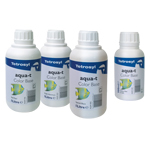|
*The VOC limit applies to the ready for use product (including twopack coatings) and includes any recommended thinners.
What is not included?
Certain products, including plastic adhesion systems and polishes are excluded from the legislation. The legislation does not cover the repair coating of motor bikes, historic motor cars or any agricultural machinery, such as tractors.
When does the new legislation come into force?
Non-compliant product cannot be manufactured for sale to Vehicle Repairers after 1st January, 2007, although paint
manufacturers can supply products manufactured before this date for a period of up to one year (until 31 December 2007). The product directive is a sellers law in that it focuses on the paint manufacturer and distributors rather than the end user. They will only be able to supply compliant products to businesses covered by the PPD.
How will this affect permits?
Under existing devolved UK legislation many bodyshops are required to have a permit to operate. Current solvent thresholds are 1 tonne in England, Wales and Northern Ireland, 2 tonnes in Scotland and will not change. The application and subsistence costs will be lower than current to reflect the simplified process by the use of compliant coatings.
What change will there be to the paints I use?
Bodyshops covered by existing controls will be able to continue using most of their existing products. Those who have not been using “compliant” coatings will need to use waterborne basecoat technology and other lower VOC products for repairing motor vehicles.
How will the product labelling change?
From 1st January 2007, products defined by the categories in the table will require a new VOC label to confirm that the maximum VOC of the ready for use paint recommended in the Technical Data Sheet (TDS) is less than the limit for the sub- category. This will be a pictogram of the TDS followed by a code e.g. 2004/42/IIB (d) (420) 410. The explanation of this will be given in the TDS. This labelling is to comply with the regulations and does not affect the user.
Source: British Coatings Federation (BCF); Volatile Organic Compounds (VOCs) in Paints, Varnishes & Vehicle Refinishing Products. Regulations 2005.
September 2006
|